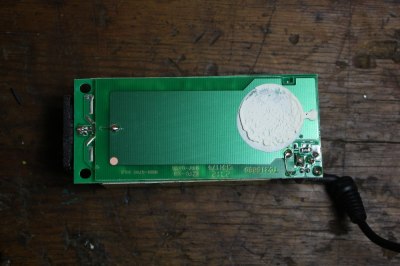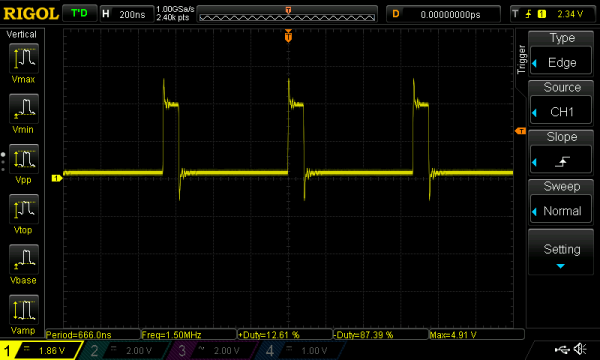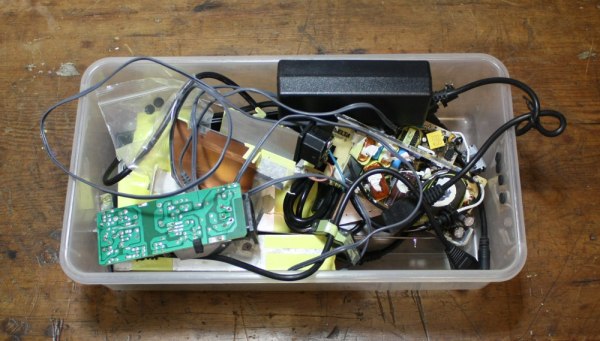Last time, I showed you a simple PWM block and an open source UART core. This time, I’ll put these parts together to create a PC PWM output peripheral.
Day: December 17, 2015
Heathkit’s Triumphant Return?
Heathkit, the storied purveyor of high-quality DIY electronics kits that inspired a generation of enthusiasts and launched the careers of many engineers, has returned from the dead. We think. At least it seems that way from this build log by [Spritle], an early adopter of the rebooted company’s first offering. But if [Spritle]’s experience is any indication, Heathkit has a long way to go to recreating its glory days. Continue reading “Heathkit’s Triumphant Return?”
A Scam Of Galactic Proportions
Here at Hackaday we see a lot of technological hoaxes looking for funding. Some are on Kickstarter, others are firms looking for investors. And unlike a lot of the press, we’re both skeptical and experienced enough to smell the snake oil. When you read about a laser-powered razor blade that looks too good to be true, you know we’ve got your back.
The background: [Zachary Feinstein] is a professor at Washington University in St. Louis who studies financial engineering, and in particular systemic financial risk in the banking sectors. So he’s just exactly the guy you’d tap to write a paper on the financial repercussions of the destruction of the Death Stars in Star Wars (PDF). Wait, what?
The central argument of the paper is that, since the Empire has so much money wrapped up in building the Death Stars, it’s economic suicide for the Rebels to destroy it. To quantify any of this, [Feinstein] runs financial crisis models. The idea is that the Rebels win, but they inherit an economy that’s so dysfunctional that they’d have been better off not destroying the Death Stars.
We’re not saying that the rest of the press is gullible, but we are saying that they’re not putting their best economists onto articles about financing Death Stars. But here at Hackaday, we are. And we’re calling it a hoax. So let’s look into what the paper gets right, and what makes less sense even than Chewbacca’s infernal growling. Spoiler: we’ll get wrapped up in numbers because it’s fun, but the whole thing is moot for Econ 101-style reasons.
Gutted USB Power Packs Run Your TV
With a computer in every pocket, being tethered to large mains-powered appliances is a bit passe. No longer must you be trapped before the boob tube when you can easily watch YouTube on your phone. But you might be jonesing for the big screen experience in the middle of a power outage, in which case learning to build a simple battery bank built from cheap cell-phone power packs might be a good life skill to practice.
Looking more for proof of concept than long-term off-grid usability from his battery bank, [Stephen] cobbled together a quick battery bank from 18650 lithium ion batteries and a small 300W inverter. All the hardware was had on the cheap from an outfit called Cd-r King, a Phillipines-based discount gadgetorium we’d like to see in the states. He got a handful of USB power packs and harvested the single 18650 battery from each, whipped up a quick battery holder from 1/2″ PVC pipe and some bolts to connect the inverter. With four batteries in series he was able to run a flat-screen TV with ease, as well as a large floor fan – say, is that a Mooltipass on [Stephen]’s shelf in the background? And what’s nice about the gutted USB power packs is that they can still be used to recharge the batteries.
As [Stephen] admits, this is a simple project and there’s plenty of room to experiment. More batteries in parallel for longer run times is an obvious first step. He might get some ideas from this laptop battery bank project, or even step up to Tesla Li-ion battery hacking – although we doubt Cd-r King will be of much help with the latter.
Sparkfun Tears Apart Power Supplies
We love a good tear-down, and last week’s “Enginursday” at Sparkfun satisfied our desire to see the insides of AC-DC switching power supplies, accompanied by knowledgeable commentary. [MTaylor] walks us through how the basic circuit works and then points out why various other elaborations are made, and how corners are sometimes cut, in a few power supplies that he’s taken apart.
 What struck us in the comparison was that some of the power supplies were very minimal designs, while others had “features” that were obviously added after the fact. For instance, the Li Shin supply (about half-way down the page) has an extra circuit board tacked on to the bottom of the real circuit board to act as EM shielding.
What struck us in the comparison was that some of the power supplies were very minimal designs, while others had “features” that were obviously added after the fact. For instance, the Li Shin supply (about half-way down the page) has an extra circuit board tacked on to the bottom of the real circuit board to act as EM shielding.
Rather than declare this a dodgy hack, as we would have, [MTaylor] declares it to be “Good News!” because it means that they’ve probably run an emissions test, failed it, and then added this bit on to make it pass. This is of course in contrast to the other makers who’ve probably never even considered emissions testing. Sigh.
If you’re interested in seeing more inner bits of power bricks, Sparkfun forum reader [sgrace] passed along this field guide to various power supplies, which is also worth a look. And if you’re interested in building yourself the ultimate bench power supply, look no further than this Hackaday.io project by [The Big One].
















